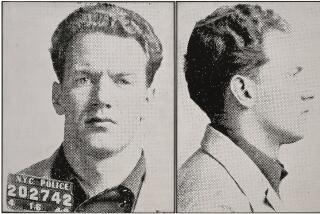Arts Group to Get Bulk of $15-Million Warhol Estate
- Share via
PITTSBURGH — At a Byzantine funeral rite, under the impassive gaze of religious icons, friends and family said farewell today to Andy Warhol, who helped spark the Pop Art movement with his images of soup cans and superstars.
“Andy Warhol’s works are recognized as being among the greatest of the period,” Father Peter Tay told about 85 people at the service at Holy Ghost Byzantine Catholic Church on Pittsburgh’s working-class North Side, far from New York’s glitzy art world.
Burial took place later at a Byzantine Catholic cemetery.
At a viewing Wednesday at a North Side funeral home, James Warhola, a nephew who followed his uncle’s lead in becoming a New York artist, said Warhol’s return to his hometown in death was “like he’s returning to his roots.”
“His friends in New York thought he would be better buried here next to his mother,” Warhola said. “I think he would have wanted it that way. He was very close to his mother,” who lived with him for a time in New York.
None of the celebrities with whom Warhol surrounded himself attended the service, although rock artist Mick Jagger and his girlfriend, model Jerry Hall, sent lilies from New York.
Warhol, 58, died in his sleep Sunday after gallbladder surgery and a heart attack at New York Hospital. Dr. Elliott Gross, New York City’s medical examiner, said the exact cause of death will be determined after more tests.
Meanwhile, his will was filed Wednesday in Manhattan Surrogate Court. It showed that the son of an immigrant coal miner left a $10-million to $15-million estate which includes extensive real estate, stocks and securities and a large art collection.
The artist left the bulk of his money to establish a visual arts foundation. It provides $250,000 to Warhol’s business manager and friend, Frederick Hughes, and a maximum of $500,000 to two brothers, John Warhola of Pittsburgh and Paul Warhola of Clairton.
The artist, who shortened his last name after graduating from Carnegie Institute of Technology and moving to New York in 1949, visited Pittsburgh two or three times since leaving, according to family members.
More to Read
The biggest entertainment stories
Get our big stories about Hollywood, film, television, music, arts, culture and more right in your inbox as soon as they publish.
You may occasionally receive promotional content from the Los Angeles Times.










